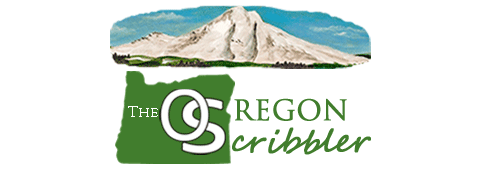
The Era of Open Information
The ascendant Era of Open Information might be described as freely available online content from a vast number of sources. Today, unlike fifteen years ago, I can access media that I had been entirely unaware of, or had no access to, or simply could not afford, via an Internet browser and a search engine, including any number of venerable magazines and newspapers, without paying for it. Will this last?
It is a certain form of nirvana for me, but for information providers it has been too often a financial nightmare. The Era of Open Information is already shrinking; it is altering itself, as it is open not just because information is much more easily accessible online, but precisely because it is free. With too many sources to choose from, readers are reluctant to pay and sources are reluctant to charge directly for content, for the real fear of losing their viewers to another free source. Advertisers are paying much less for direct advertisement online than they did for print, and much more for native advertising, as many more online viewers respond to the ‘native’ advertisements than the undisguised ones.
Native advertising is a journalistic neologism that refers to paid advertising which is passed off as genuine content. The phrase is sarcastic, as the ads are clearly not native, but dressed up as if native to look just like the real journalism that it is decidedly not. The phrase may even have been shaped to disguise the long prevalent practice of disguised advertisements. To wit: The U.S. presidential elections have featured many native ads in the form of planted stories; infomercials are ubiquitous on television; print media regularly format some ads to look like articles; junk mail can come in the form of an official notice; etc.
Michael Wolff in the Guardian recently pointed out that ‘even the New York Times can’t resist going lowbrow with native advertising.’ He suggests that the New York Times ‘wants to stand for quality controls and exclusivity, but it must compete with Buzzfeed and Gawker and the like.‘ Without advertising revenue, they will go under or become much reduced, like so many newspapers and magazines already have.
More and more quality information sources are taking slow steps to charge for their online services, clearly necessary for their survival. Some allow a reader to read a summary or a teaser, and otherwise pay for the full article or subscribe. Others allow readers to read a few articles free per month. Some allow links from popular sites to free articles, free only if they were sourced from the popular site. All of these techniques will help them slowly re-build their subscription bases to help to pay for the talent necessary to write quality content. Another approach is to move to an ad-free subscription-only approach, which Andrew Sullivan, for example, has done with The Dish, and has made a small profit in his first year of operation.
Whatever the forms of revenue that information providers are seeking to survive in the Internet world, the Era of Open Information will continue to shrink, but it is not closing. While it has been a great pleasure to have access to more information than I could ever pay for, the loss of some of this was inevitable. I will still have immediate access to much, much more than I ever had before, but I will have to pay for it in some way. The most obvious way is still by subscribing just as before, picking and choosing which sources are worth paying for, but now with even more sources to choose from. Another obvious way is still through the viewing of direct online advertisement: Viewing direct ads in the form of pop-ups, videos that open with an advertisement, sidebar ads, ads in free social service sites, and the like. The less obvious way will be the increased work to filter out the biases and spin and distortions and falsehoods that have always existed in the content, and that inevitably increase through the growth of native advertising.
Good journalists are careful to check their facts, and attempt to be either unbiased, or to plainly call out their biases. This has always been difficult to fully accomplish in practice, but the best sources of journalism are those that place more emphasis on this behavior. With native advertising on the rise this will be even harder, but certainly not impossible; part of the burden of good journalism has always been on the reader to sort it all out. The reader’s increased editorial vigilance appears to be one of the costs of an Era of Open Information which has otherwise seriously extended our information horizons.


